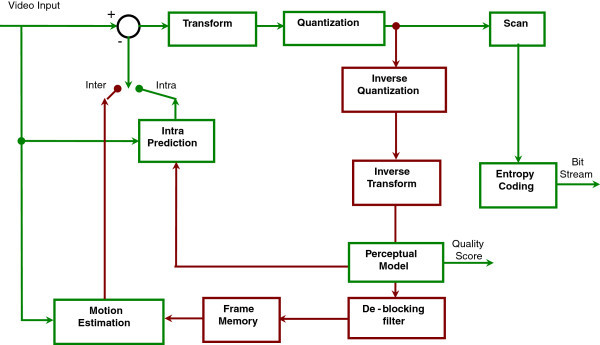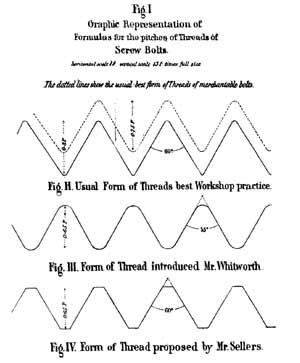|
VCEG
The Video Coding Experts Group or Visual Coding Experts Group (VCEG, also known as Question 6) is a working group of the ITU Telecommunication Standardization Sector (ITU-T) concerned with standards for compression coding of video, images, audio signals, biomedical waveforms, and other signals. It is responsible for standardization of the "H.26x" line of video coding standards, the "T.8xx" line of image coding standards, and related technologies. Administratively, VCEG is the informal name of Question 6 (Visual, audio and signal coding) of Working Party 3 (Audiovisual technologies and intelligent immersive applications) of ITU-T Study Group 16 (Multimedia and related digital technologies). Its abbreviated title is ITU-T Q.6/SG16, or more simply, ITU-T Q6/16. The goal of VCEG is to produce ITU-T Recommendations (international standards) for video coding and image coding methods appropriate for conversational (e.g. videoconferencing and video telephony) and non-conversational ... [...More Info...] [...Related Items...] OR: [Wikipedia] [Google] [Baidu] |
Joint Video Team
Advanced Video Coding (AVC), also referred to as H.264 or MPEG-4 Part 10, is a video compression standard based on block-oriented, motion-compensated coding. It is by far the most commonly used format for the recording, compression, and distribution of video content, used by 84–86% of video industry developers . It supports a maximum resolution of 8K UHD. The intent of the H.264/AVC project was to create a standard capable of providing good video quality at substantially lower bit rates than previous standards (i.e., half or less the bit rate of MPEG-2, H.263, or MPEG-4 Part 2), without increasing the complexity of design so much that it would be impractical or excessively expensive to implement. This was achieved with features such as a reduced-complexity integer discrete cosine transform (integer DCT), variable block-size segmentation, and multi-picture inter-picture prediction. An additional goal was to provide enough flexibility to allow the standard to be applied ... [...More Info...] [...Related Items...] OR: [Wikipedia] [Google] [Baidu] |
Video Coding
A video coding format (or sometimes video compression format) is a content representation format of digital video content, such as in a data file or bitstream. It typically uses a standardized video compression algorithm, most commonly based on discrete cosine transform (DCT) coding and motion compensation. A computer software or hardware component that compresses or decompresses a specific video coding format is a video codec. Some video coding formats are documented by a detailed technical specification document known as a video coding specification. Some such specifications are written and approved by standardization organizations as technical standards, and are thus known as a video coding standard. There are ''de facto'' standards and formal standards. Video content encoded using a particular video coding format is normally bundled with an audio stream (encoded using an audio coding format) inside a multimedia container format such as AVI, MP4, FLV, RealMedia, or Mat ... [...More Info...] [...Related Items...] OR: [Wikipedia] [Google] [Baidu] |
Gary Sullivan (engineer)
Gary Joseph Sullivan (born 1960) is an American electrical engineer who led the development of the AVC, HEVC, and VVC video coding standards and created the DirectX Video Acceleration (DXVA) API/ DDI video decoding feature of the Microsoft Windows operating system. He is currently Director of Video Research and Standards at Dolby Laboratories and is the chair of ISO/IEC JTC 1/SC 29 (Coding of audio, picture, multimedia and hypermedia information – the committee that oversees JPEG and MPEG standardization) and of the ITU-T Video Coding Experts Group (VCEG). He was the chairman and a co-founder of the Joint Video Team (JVT) standardization committee that developed the H.264/AVC standard, and he personally edited large portions of it. In January 2010, he became a founding co-chairman of the Joint Collaborative Team on Video Coding ( JCT-VC) and an editor for developing the High Efficiency Video Coding (HEVC) standard. In October 2015, he became a founding co-chairman of the Join ... [...More Info...] [...Related Items...] OR: [Wikipedia] [Google] [Baidu] |
Thomas Wiegand
Thomas Wiegand (born 6 May 1970 in Wismar) is a German electrical engineer who substantially contributed to the creation of the H.264/AVC, H.265/HEVC, and H.266/VVC video coding standards. He has been elected to the German National Academy of Engineering (Acatech) and the National Academy of Science (Leopoldina). For H.264/AVC, Wiegand was one of the chairmen of the Joint Video Team (JVT) standardization committee that created the standard and was the chief editor of the standard itself. He was also a very active technical contributor to the H.264/AVC, H.265/HEVC, and H.266/VVC video coding standards. Wiegand also holds a chairmanship position in the ITU-T VCEG of ITU-T Study Group 16 and previously in ISO/ IEC MPEG standardization organizations. In July 2006, video coding work of the ITU-T was jointly led by Gary J. Sullivan and Wiegand for the preceding six years. It was voted as the most influential area of the standardization work of the CCITT and ITU-T in their 50-ye ... [...More Info...] [...Related Items...] OR: [Wikipedia] [Google] [Baidu] |
ITU-T Study Group 16
The ITU-T Study Group 16 (SG16) is a statutory group of the ITU Telecommunication Standardization Sector (ITU-T) concerned with multimedia coding, systems and applications, such as video coding standards. It is responsible for standardization of the "H.26x" line of video coding standards, the "T.8xx" line of image coding standards, and related technologies, as well as various collaborations with the World Health Organization, including on safe listening (H.870) accessibility of e-health (F.780.2), it is also the parent body of VCEG and various Focus Groups, such as the ITU-WHO Focus Group on Artificial Intelligence for Health and its AI for Health Framework. Administratively, SG16 is a statutory meeting of the World Telecommunication Standardization Assembly (WTSA), which creates the ITU-T Study Groups and appoints their management teams. The secretariat is provided by the Telecommunication Standardization Bureau (under Director Seizo Onoe). WTSA instructed ITU to hold the Global ... [...More Info...] [...Related Items...] OR: [Wikipedia] [Google] [Baidu] |
MPEG
The Moving Picture Experts Group (MPEG) is an alliance of working groups established jointly by International Organization for Standardization, ISO and International Electrotechnical Commission, IEC that sets standards for media coding, including compression coding of audio compression (data), audio, video compression, video, graphics, and Compression of Genomic Sequencing Data, genomic data; and transmission and Container format (digital), file formats for various applications.John Watkinson, ''The MPEG Handbook'', p. 1 Together with Joint Photographic Experts Group, JPEG, MPEG is organized under ISO/IEC JTC 1/ISO/IEC JTC 1/SC 29, SC 29 – ''Coding of audio, picture, multimedia and hypermedia information'' (ISO/IEC Joint Technical Committee 1, Subcommittee 29). MPEG formats are used in various multimedia systems. The most well known older MPEG media formats typically use MPEG-1, MPEG-2, and MPEG-4 AVC media coding and MPEG-2 systems MPEG transport stream, transport streams an ... [...More Info...] [...Related Items...] OR: [Wikipedia] [Google] [Baidu] |
Motion Compensation
Motion compensation in computing is an algorithmic technique used to predict a frame in a video given the previous and/or future frames by accounting for motion of the camera and/or objects in the video. It is employed in the encoding of video data for video compression, for example in the generation of files. Motion compensation describes a picture in terms of the transformation of a reference picture to the current picture. The reference picture may be previous in time or even from the future. When images can be accurately synthesized from previously transmitted/stored images, the compression efficiency can be improved. Motion compensation is one of the two key video compression techniques used in video coding standards, along with the discrete cosine transform (DCT). Most video coding standards, such as the H.26x and MPEG formats, typically use motion-compensated DCT hybrid coding, known as block motion compensation (BMC) or motion-compensated DCT (MC DCT). Functionality ... [...More Info...] [...Related Items...] OR: [Wikipedia] [Google] [Baidu] |
Fraunhofer Institute For Telecommunications
The Fraunhofer Institute for Telecommunications, Heinrich Hertz Institute, HHI, also known as Fraunhofer HHI or Fraunhofer Heinrich Hertz Institute, is an organization of the Fraunhofer Society based in Berlin. The institute engages in applied research and development in the fields of physics, electrical engineering and computer sciences. Competencies The Fraunhofer Heinrich Hertz Institute develops mobile and stationary broadband communication networks and multimedia systems. Focal points of independent and contract research conducted by Fraunhofer HHI are photonic components and systems, fiber optic sensor systems, and image signal processing and transmission. Future applications for broadband networks are developed as well. Research in this area focuses on 3D displays, UHD panorama video production, human-machine interaction through gesture control, optical satellite communication and data transmission technologies such as visible light communications. Scientists at th ... [...More Info...] [...Related Items...] OR: [Wikipedia] [Google] [Baidu] |
Discrete Cosine Transform
A discrete cosine transform (DCT) expresses a finite sequence of data points in terms of a sum of cosine functions oscillating at different frequency, frequencies. The DCT, first proposed by Nasir Ahmed (engineer), Nasir Ahmed in 1972, is a widely used transformation technique in signal processing and data compression. It is used in most digital media, including digital images (such as JPEG and HEIF), digital video (such as MPEG and ), digital audio (such as Dolby Digital, MP3 and Advanced Audio Coding, AAC), digital television (such as SDTV, HDTV and Video on demand, VOD), digital radio (such as AAC+ and DAB+), and speech coding (such as AAC-LD, Siren (codec), Siren and Opus (audio format), Opus). DCTs are also important to numerous other applications in science and engineering, such as digital signal processing, telecommunication devices, reducing network bandwidth usage, and spectral methods for the numerical solution of partial differential equations. A DCT is a List of Fourier ... [...More Info...] [...Related Items...] OR: [Wikipedia] [Google] [Baidu] |
Standards Organization
A standards organization, standards body, standards developing organization (SDO), or standards setting organization (SSO) is an organization whose primary function is developing, coordinating, promulgating, revising, amending, reissuing, interpreting, or otherwise contributing to the usefulness of technical standards to those who employ them. Such an organization works to create uniformity across producers, consumers, government agencies, and other relevant parties regarding terminology, product specifications (e.g. size, including units of measure), protocols, and more. Its goals could include ensuring that Company A's external hard drive works on Company B's computer, an individual's blood pressure measures the same with Company C's sphygmomanometer as it does with Company D's, or that all shirts that should not be ironed have the same icon (a clothes iron crossed out with an X) on the label. Most standards are voluntary in the sense that they are offered for adoption by people ... [...More Info...] [...Related Items...] OR: [Wikipedia] [Google] [Baidu] |
RealNetworks
RealNetworks LLC is an American technology company and provider of Internet streaming media delivery software and services based in Seattle, Washington. The company also provides subscription-based online entertainment services and mobile entertainment and messaging services. History RealNetworks (then known as Progressive Networks) was founded in 1994 by Rob Glaser, an ex-Microsoft executive, and a management team including Phil Barrett, Andy Sharpless, and Stephen Buerkle. The original goal of the company was to provide a distribution channel for politically progressive content. It evolved into a technology venture to leverage the Internet as an alternative distribution medium for audio broadcasts. Progressive Networks became RealNetworks in September 1997, in advance of the company's initial public offering (IPO) in October 1997 when shares of the company started trading on Nasdaq as "RNWK". RealNetworks were pioneers in the streaming media markets and broadcast one of the ... [...More Info...] [...Related Items...] OR: [Wikipedia] [Google] [Baidu] |




